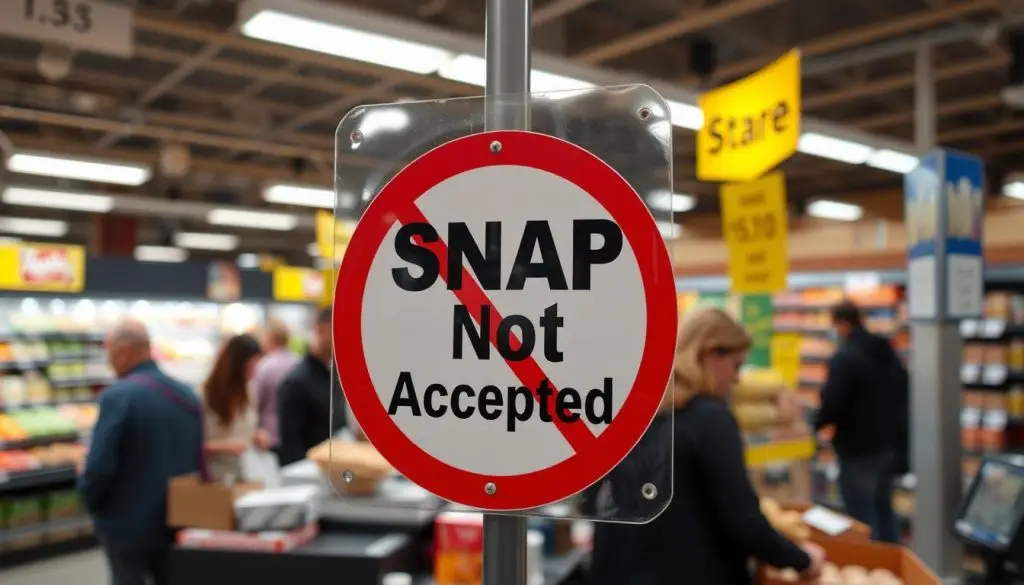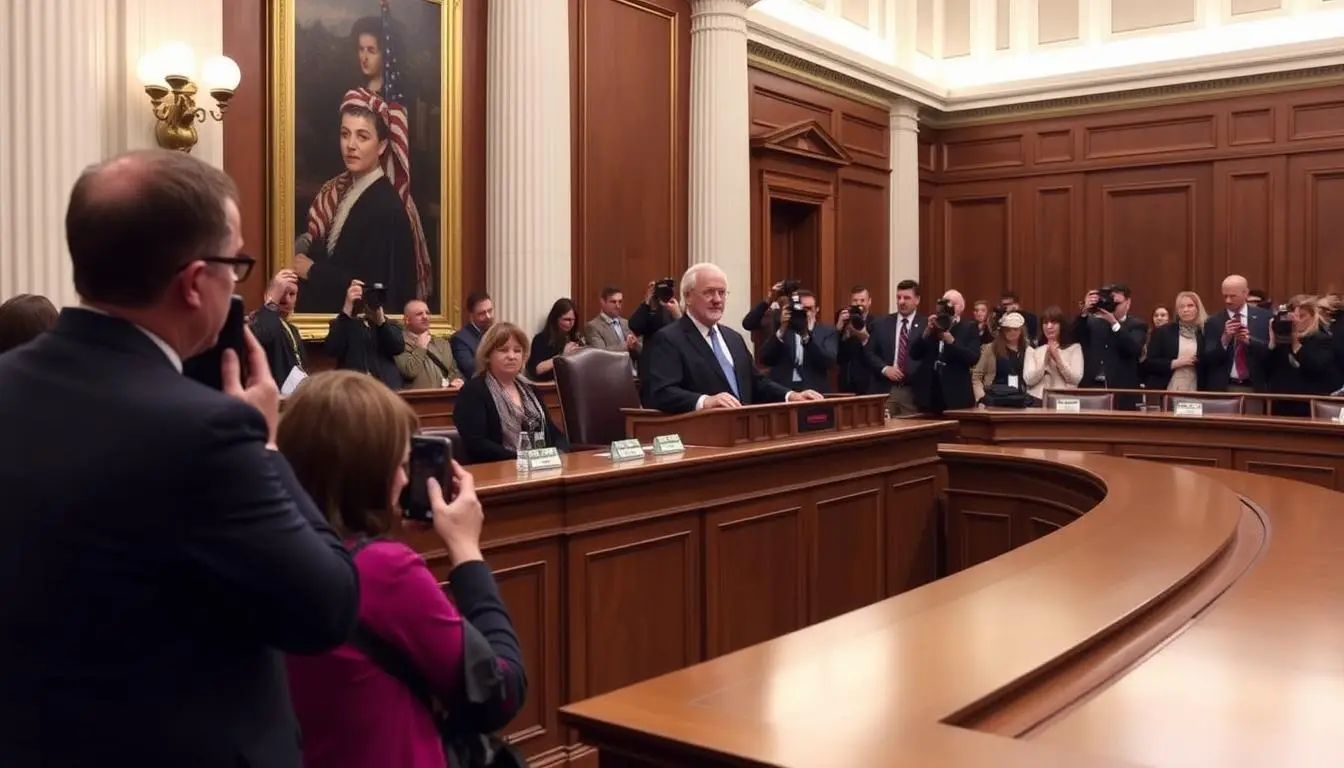Judge Orders Trump Administration to Fully Fund SNAP Benefits on Friday for Thanksgiving
Landmark decision: A judge mandates that the Trump Administration must fully fund SNAP benefits, impacting millions in need of food assistance.

SNAP benefits
A federal judge ordered the Trump administration to fund SNAP benefits for November by Friday fully. He rejected any plan for partial payments. Judge John J. McConnell Jr. said delays in food assistance funding have already gone too far.
He warned that withholding aid even one more day is unacceptable. The administration wanted an emergency stay from the 1st U.S. Circuit Court of Appeals. They argued they needed to save money for WIC. More on SNAP. Snap Benefits Confirmed
Officials said they had to make tough decisions due to the shutdown. The court refused to pause the order. This kept the focus on those who rely on government programs for groceries.
Local governments and national nonprofits supported the ruling. They said families can’t budget when there is uncertainty. The U.S. Department of Agriculture wanted permission for partial payments.
However, the judge stated that the duty to fully fund SNAP benefits is more important. Millions of people already face tough choices at the checkout line. About one in eight Americans uses SNAP, including many children.
With pressure mounting, the fight over SNAP funding tests how quickly the government acts. It’s about household budgets.
SNAP Benefits Key Takeaways
- A federal judge ordered the administration to fund SNAP benefits by Friday, rejecting partial payments entirely.
- The 1st Circuit was asked for an emergency stay, but the order remains in effect for November.
- Judge John J. McConnell Jr. cited the urgent need for food assistance funding during the shutdown.
- USDA sought flexibility for partial disbursements while balancing WIC, but the court disagreed.
- Local governments and nonprofits urged full payments to stabilize household budgets.
- The dispute highlights how government assistance programs respond when a lapsed appropriation is in effect.
What the Court Ordered and Why It Matters for Food Assistance Funding
A federal judge quickly intervened to protect families receiving government aid. The focus is on food help funding and how it’s handled during a shutdown. It also shows the limits of budgeting when essential services are involved.
Judge McConnell’s ruling and the Friday deadline
Judge William E. Smith McConnell told the administration to fully fund SNAP by Friday for November. He said no to partial payments and refused to delay. The message was clear: SNAP benefits must not be delayed, as they are vital for food.
The order requires immediate action. Agencies must make full payments on time. Any delay was seen as risking harm to those who need the aid.
Context: government shutdown, lapsed appropriation, and USDA’s role
The case happened during a government shutdown and a lapse in SNAP funding. USDA had to manage limited funds without clear replacement money. The administration requested emergency assistance from the appeals court, arguing that Congress controls the funds.
Yet, the court emphasized the need to keep aid programs running while lawmakers discuss the budget. For more on costs, emergency funds, and past funding changes, see this report on SNAP financing and court.
Impact on SNAP benefits distribution for November payments
The ruling ensures full November payments, easing worries about timing. Recipients won’t face gaps in aid, which would have started on November 1. Agencies can now distribute SNAP benefits smoothly, without the need for partial payments and corrections.
- Full payments help households plan for groceries and bills.
- States experience fewer calls and a reduced need for card reissues.
- Retailers tend to experience more consistent sales at the beginning of the month.
Stakeholders: local governments, nonprofits, and affected households
Local agencies and food banks feared more demand if funds were cut. Nonprofits like Feeding America are prepared for more people and higher costs. Families with high rent and prices would have had to skip meals without aid.
City leaders urged courts to maintain stable aid programs. They wanted predictable funding so people could shop, cook, and work without significant disruptions.
Legal Clash Over Section 32: fully fund SNAP benefits vs. WIC Priorities
The courtroom battle centers on how to allocate limited funds in a manner that is both legal and equitable. Millions of families are worried about paying rent and buying food. They also worry about eligibility for food stamps during the shutdown. Advocates want to make sure SNAP benefits are fully funded, as states prepare for November’s card reload.

The $4B question under the Agricultural Adjustment Act of 1935
The main issue is whether Section 32 can allocate $4 billion to maintain aid flow. The court is looking at the law and emergency funding. This decision affects the amount families can spend on groceries and their eligibility for food stamps.
Trump administration’s argument: preserving funds for WIC
The administration is cautious, fearing a transfer could harm WIC. They say it could make government assistance programs chaotic. Officials worry that once Section 32 is used, securing additional funds becomes uncertain.
Plaintiffs’ response: remaining $23B cited as sufficient for both programs
Plaintiffs believe there’s enough money for both WIC and SNAP. They point out that there’s enough for monthly needs. They say this way, essential nutrition programs can be supported without sacrificing one for the other.
Judge’s rebuke over partial funding and alleged political withholding
The judge is upset about plans for partial payments. He says using benefits as leverage is wrong. He wants government assistance programs to work smoothly, ensuring snap funding isn’t held back by politics.
SNAP Benefits Conclusion
The court has ordered the full funding of SNAP by Friday. This move prioritizes food security during a shutdown. It ensures November SNAP benefits are distributed without interruption.
For families starting the SNAP application process, clear guidance is essential. Agencies are working diligently to ensure benefits flow smoothly.
SNAP recipients worried about Thanksgiving
The administration has appealed the decision, highlighting a bigger debate. It’s about federal budget allocation and how to balance SNAP with WIC. Judges believe full funding is necessary to prevent harm.
Local governments and nonprofits support full funding. They say it prevents hunger and reduces pressure on food banks at the start of the month.
The decision helps households avoid sudden gaps in their SNAP benefits. About one in eight Americans depends on SNAP. The ruling aligns with previous waivers and existing authority.
As the case progresses, the government has billions of dollars in emergency funds. News reports on the court-ordered funding explain why the Friday deadline was critical.
For long-term stability, Congress must restore appropriations. Clear communication about the snap application process is vital. This helps new applicants during stressful times.
With a stable federal budget and steady administration, agencies can meet needs without interruption. This keeps communities secure.
SNAP Benefits FAQ
What did Judge John J. McConnell Jr. order regarding SNAP benefits, and when is the deadline?
Judge McConnell ordered the Trump administration to fully fund SNAP benefits for November by Friday. He rejected partial funding. He said delaying food assistance even one day is unacceptable.
Why does this ruling matter for food assistance funding and SNAP eligibility requirements?
This ruling ensures full November payments for food assistance. It keeps funding stable during a shutdown. It also ensures that households that qualify for SNAP receive their full benefits.
How did the government shutdown and lapse in appropriations affect USDA’s role in SNAP funding?
The USDA stated that it could only make partial payments without congressional action. The court instructed the USDA to fund SNAP fully. This decision protects beneficiaries during the shutdown.
What is the impact on SNAP benefits distribution for November payments?
The order prevents gaps and confusion at the start of the month. Recipients will get full November benefits on time. This avoids the uncertainty of partial payments.
Who are the key stakeholders, and what did they advocate?
Local governments, nonprofits, and households urged the appeals court to keep the order. They said partial benefits would increase food insecurity and strain resources.
What is the “B question” under the Agricultural Adjustment Act of 1935 (Section 32)?
The dispute concerns the use of Section 32 funds for SNAP during a lapse. The ruling allowed the use of these funds to avoid interruptions.
How did the administration argue for preserving funds for WIC?
The administration said using Section 32 funds for SNAP could harm WIC. They called it “starving Peter to feed Paul.” They warned it could turn budget allocation into a “shell game.”
What was the plaintiffs’ response about remaining funds and program needs?
Plaintiffs said there’s about a billion left. They argued WIC needs around billion monthly and SNAP about .5 billion. They said both programs could be funded without hurting WIC.
How did the judge respond to the plan for partial funding and statements about withholding benefits?
The judge criticized the administration for partial funding. He also rebuked President Donald Trump’s comments on waiting for the government to reopen. He called withholding payments unacceptable and denied a stay.
Did the administration seek an emergency stay, and what was the outcome?
Yes, it requested an emergency stay from the 1st U.S. Circuit Court of Appeals by 4 p.m. ET. Judge McConnell denied the stay in the lower court. He insisted that full funding proceed immediately. Stakeholders urged the appeals court to keep the order.
What does this mean for government assistance programs like SNAP and WIC going forward?
This case illustrates the tension between agency discretion and court orders in crises. The long-term stability of these programs depends on Congress restoring appropriations and ensuring predictable funding.
How does the ruling affect the SNAP application process during the shutdown?
The ruling protects current benefit levels and timing. It eases pressure on agencies processing new applications. People applying should follow the standard SNAP application process through their state agencies to determine eligibility for food stamps.
Will SNAP funding be prioritized over WIC if Section 32 is used?
The court’s order prioritizes immediate food security by fully funding SNAP now. Plaintiffs believe Section 32 is large enough to sustain both SNAP and WIC. USDA warns about uncertain replenishment.
What should households expect on Nov. 1 regarding SNAP benefits distribution?
Full November benefits should arrive on the standard schedule, subject to each state’s issuance calendar. The order aims to prevent delays or reduced amounts at the start of the month.
Who decides future SNAP funding, and what role does the federal budget allocation play?
Congress controls long-term funding through the federal budget allocation process. Until appropriations are restored, courts and agencies must implement short-term solutions to maintain the flow of food assistance.







